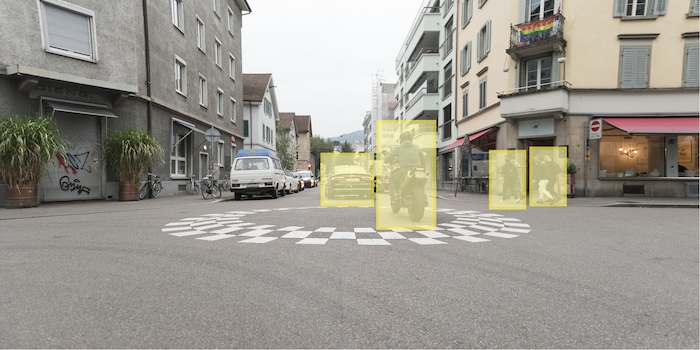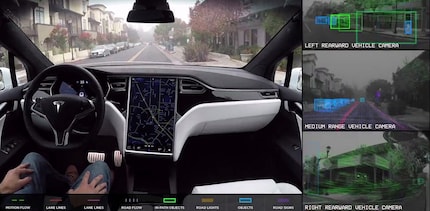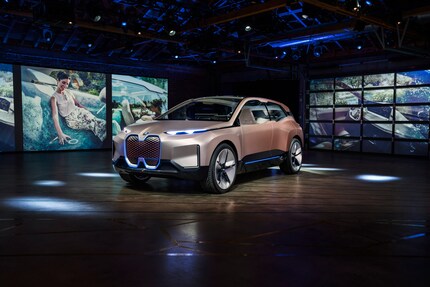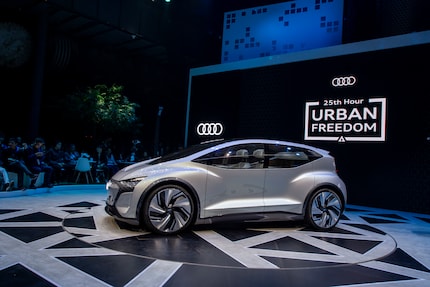
Background information
The future of mobility: the bubble sofa car is out
by Dominik Bärlocher

Cars are becoming increasingly intelligent and independent. In the future, they could be driving on the roads without our intervention. Will they then also be allowed to make ethical decisions? The answer is complex.
What do you do when a child and an old man cross the road and you can't brake in time in your car? Do you hit the man or the child? These and similar questions were asked by the US technology university MIT in its Moral Machine experiment. The internet survey generated almost 40 million decisions. The background lies in the increasingly intelligent vehicles. Over the next few years, car manufacturers and politicians will have to find out how a fully self-driving car should behave in such situations. It is already clear how complex the whole thing is.
The most advanced cars registered in Germany rely on a system that uses various sensors such as cameras, radar, laser scanners or ultrasound to create an exact image of the surroundings, explains Barbara Wege, Communications Officer at Audi. Depending on the respective system and the associated support, such as emergency braking or lane guidance, an active and functional chain is triggered for the required actuators.

Although it is important to deal with the problems of self-driving cars early enough, today's vehicles are still a long way from complete autonomy and therefore moral conflicts. Because every millisecond counts in complex traffic situations, vehicles, traffic light systems etc. must be able to communicate with each other without delay. must be able to communicate with each other without delay in the first place. This is where 5G comes into play, which is another hot area.
It is still important to know the five different stages on the way to fully automated driving.
Most modern vehicles are capable of level 1. Among other things, it includes active cruise control, automatic distance keeping to the vehicle in front and collision warning with automatic braking.
Partially automated driving is also already a reality in some vehicles, such as Tesla. It extends level 1 with steering and lane guidance assistance and can therefore also partially automate the steering wheel. Automatic parking is also part of level 2.
While the driver must still have their hands on the wheel at levels 1 and 2, the car can take over the entire driving task from level 3 onwards. However, the driver must be able to intervene at any time. BMW, for example, is planning to offer such vehicles in 2021.
The preliminary stage to fully automated driving can also master highly complex urban traffic situations. In the event of sudden roadworks, for example, the vehicle can react without driver intervention. Should the driver fall asleep, the vehicle has the authority to bring the car to a safe state. However, the driver must still be able to drive in level 4. Manufacturers are already working on fleets with this level as well.
In fully automated driving, the vehicle requires neither a steering wheel nor pedals. It functions completely independently and the occupants become passengers. The first field trials have also taken place in Switzerland. However, the most recent, involving a VBSH bus in Schaffhausen, was temporarily suspended after a collision with an e-biker. In the USA, more than 60 companies are already testing their self-driving cars.

From assisted to automated driving, the aim is always to make road traffic safer. However, it will still be a while before level four or even five are used on a large scale. In addition to the technical hurdles, there is also the question of ethics. Should a vehicle be able to drive completely without human intervention and how should it then behave in the event of an accident?
Today's computer-assisted vehicles are designed to be defensive and avoid accidents. "In critical situations, the brakes are maximised and the vehicle swerves into the open space," explains Bernhard Ederer, BMW spokesperson for autonomous driving. An unavoidable accident is when a pedestrian walks in front of a car within the braking distance of around ten metres at 50 km/h. "If two people walk in front of a self-driving car at the same distance within the braking distance at the same time and it is no longer possible to avoid them, the vehicle will brake to the maximum and maintain the direction of travel."
A human behind the wheel would perhaps react differently in the same situation. With the increasing intelligence of vehicle systems, the question therefore arises as to whether a car needs more freedom of choice. This issue is currently being examined in various committees - both by politicians and car manufacturers. The moral machine experiment has shown how a large proportion of the population would decide. However, this does not mean that these conclusions can be transferred one-to-one to machines. Should a car make ethical decisions at all, and if so, by what standards? Empirical? Political ones?
"The debate about autonomous driving is just as heated as the 5G discourse," says Benno Nager on the phone. He works at FEDRO, the Federal Roads Office, and is responsible for all automated driving trials in Switzerland. The influence of business is almost as great as that of politics, says Nager. There are still no clear answers as to who ultimately decides. The car manufacturers are clearly not keen to take the lead either. As human lives are ultimately at stake, guidelines from the respective legislators are necessary, says Wege. "Politicians will not be in a position to regulate the ethical issue," counters Nager.

The Federal Constitution states that no life may take precedence over another. The German Ethics Commission, which has been working intensively on this topic, has come to the same conclusion. Based on this premise, it would appear that the discussion about fully automated vehicles is moot. After all, how is a car supposed to make such independent traffic decisions? If it saves the driver, his life is more important than that of pedestrians. If it saves the pedestrians and the driver dies, the opposite problem arises.
This supposedly unsolvable dilemma is not stopping countries such as the USA from testing fully automated vehicles on a large scale. The fact that the tests are not being cancelled despite fatal accidents shows how strong the cultural differences are around the world. Last year, a 49-year-old woman was fatally injured by a self-driving Uber vehicle in a suburb of Phoenix. "Uber would no longer drive here," Nager is convinced. For the lawyer, this is a clear example of how the USA works according to the trial-and-error principle. In Asian countries, on the other hand, the state decides what happens.
The importance of a uniform standard becomes clear as soon as a car crosses the border. After all, the autopilot should also work abroad. By and large, standardised traffic regulations apply around the world today. They are based on the Vienna Convention on Road Traffic of 1968, which was drawn up by the UN. But even if the UN is the greatest common denominator, the perception of what is right and what is wrong is strongly linked to the population. And because cultural backgrounds are constantly changing on top of this, the situation is highly complex. Nager cites the example of his nephews, who grew up with mobile phones compared to him. For them, progress is more important than the question of ethics.
It will take a few more years from level two, which we have today, to level five of fully automated driving. While the legal basis for level 3 vehicles and thus the next generation is already in place in Germany, the decision is still pending in Switzerland. However, as car manufacturers do not expect the corresponding vehicles to be delivered until 2021, politicians still have some time. At the moment, it doesn't look like fully automated vehicles will be rolling onto our roads any time soon, let alone across our borders. The political discourse on ethics must first be conducted and the technical prerequisites created. And if we take into account how far cultural views diverge, it remains to be seen whether cars will ever act like humans anyway.
Update: "Autonomous driving" has been changed to the correct term "fully automated driving"
As a child, I wasn't allowed to have any consoles. It was only with the arrival of the family's 486 PC that the magical world of gaming opened up to me. Today, I'm overcompensating accordingly. Only a lack of time and money prevents me from trying out every game there is and decorating my shelf with rare retro consoles.
Interesting facts about products, behind-the-scenes looks at manufacturers and deep-dives on interesting people.
Show all